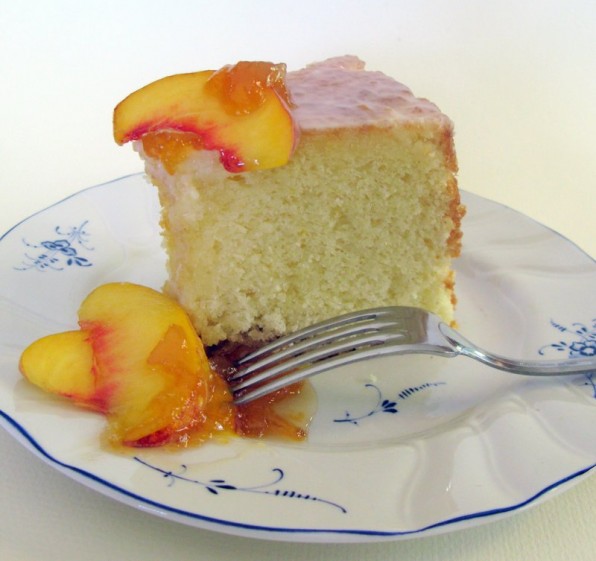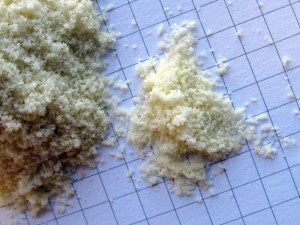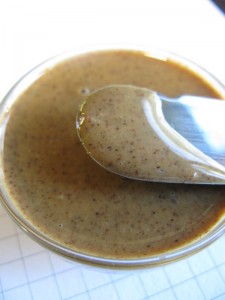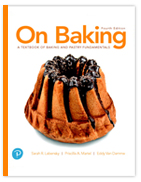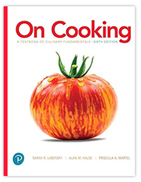Almonds are the secret ingredient in classic and modern baked goods. Think French macarons, financiers and frangipane. And almonds croissants too. And almonds are my go-to ingredient for making good-for-you treats. Healthy baking with almonds means adding almond flavor and a healthy halo to anything you bake, whether a cake or cookie, a quick bread or tart.
Here is my outline of the ways to use almonds—in all their forms — as a stand in for less healthful ingredients in baking and pastry. These tips for professional bakers apply to home cooks too.
Almond flour: Made by grinding blanched or natural almonds to a fine powder, almond flour is an ingredient familiar to European pastry chefs who use it in delicate spongecake formulas, such as the French gâteau Joconde.
The best blanched almond flour is fine and evenly ground. Products labeled almond meal tend to be coarser than products labeled almond flour.
Finely milled almond flour like the one pictured here produces the lightest cakes and macarons. Regardless of the type of almond flour that you use, always sift it before using it because it compacts while sitting in storage.
Because almond flour binds water and has its own natural fat, it tenderizes and improves the mouthfeel of muffins and cakes made with whole grains. Adding almond flour would be a great way to create a more tender oatmeal-currant muffin, for example. I’ve found that you can easily replace 20 to 35 percent of the refined wheat flour with almond flour in most cake, cookie and muffin formulas. When using almond flour in a delicate spongecake, the texture may lose some volume, but it will gain a subtle toasty aroma.
You can make your own almond flour in a food processor. To achieve the finest texture when using the food processor, start with slivered or sliced almonds instead of whole nuts. If your formula allows, add a few ounces of granulated sugar to the almonds before grinding. This helps prevent too much of the natural oil from leeching out of the nuts.
Don’t overlook the usefulness of almond flour in gluten-free formulas. The Orange and Almond Chiffon Cake pictured here uses it as does these yummy almond and buckwheat chocolate chip cookies. Most gluten-free baking blends contain starches and gums that do not enhance flavor. When employing such blends, consider swapping out a small percentage with almond flour.
Almond butter: Roasted almond butter works well in any formula that calls for natural peanut butter such as in cookies or energy bars. Stir it into buttercream icing and chocolate ganache. In buttercream, you can substitute almond butter for up to half the dairy butter. Almond butter is roughly 50 percent fat by weight. Consider finishing a custard with almond butter instead of dairy butter.
This silky smooth roasted almond butter packs a powerful punch of flavor because it is carefully roasted to a deep rich color. The dark flecks come from the almond skins, which are left on before roasting.
More Healthy Options when Baking with Almonds
Nurture your creativity by stocking your pantry with a range of almond products.
Here are some of the best features of less common almond ingredients for healthful baking.
Almond milk: This creamy non-dairy “milk” is produced either by grinding blanched almonds or almond flour with cold water and blending it to extract the solids; or, preferably, by soaking blanched almonds in water overnight, then processing the mixture and straining. I always make almond milk from scratch for a creamier product that has no added sweeteners or starches. Pastry chefs in a professional environment may want to stock a commercial product though.
Almond milk has a creamy, smooth, silky feel on the palate, with a delicate marzipan flavor and a natural sweetness. You can easily substitute almond milk for fluid milk—ounce for ounce—in any cake recipe. Use it in bread pudding, crème anglaise or a tropical-fruit trifle. It shines with citrus flavors especially tart tangerine. Vanilla can mask some of its natural beauty.
Simmer roasted almonds in almond milk before using the liquid to make ice cream. This infusion doubles the almond taste and creates the kind of layered flavor that will distinguish your iced confection.
Almond oil: Pressed from roasted or raw almonds, almond oil has a high smoke point (about 420°F) so it’s suitable for frying. Made with raw almonds, the oil has a mild taste and fragrance; with roasted almonds, it is nutty.
Almond oil can be used in place of oil or melted butter in any recipe. In a chiffon cake, raw almond oil would have that healthy halo that all almond products have. Its light flavor won’t interfere with other tastes in your cake. If you substitute roasted almond oil for melted butter in a génoise or vegetable oil in a quick bread, roasted almond oil would contribute a rich, nutty taste.
Almond paste: You are probably familiar with almond paste in cakes, macaroons and fillings. But did you realize you can use it to make a refreshing granita? In Sicily, one of the most popular pastry-shop offerings is an icy almond-milk granita made by freezing a blend of almond paste and water.
With high-quality almond paste (65 percent almonds, 35 percent sugar), figure about 1/3 cup almond paste to 1½ cups of water. Blend, chill, then freeze. Sicilians enjoy almond-milk granita for breakfast on hot days.
[This material is excerpted from an interview I did with the Almond Board of California to help educate pastry chefs on using almonds.]

